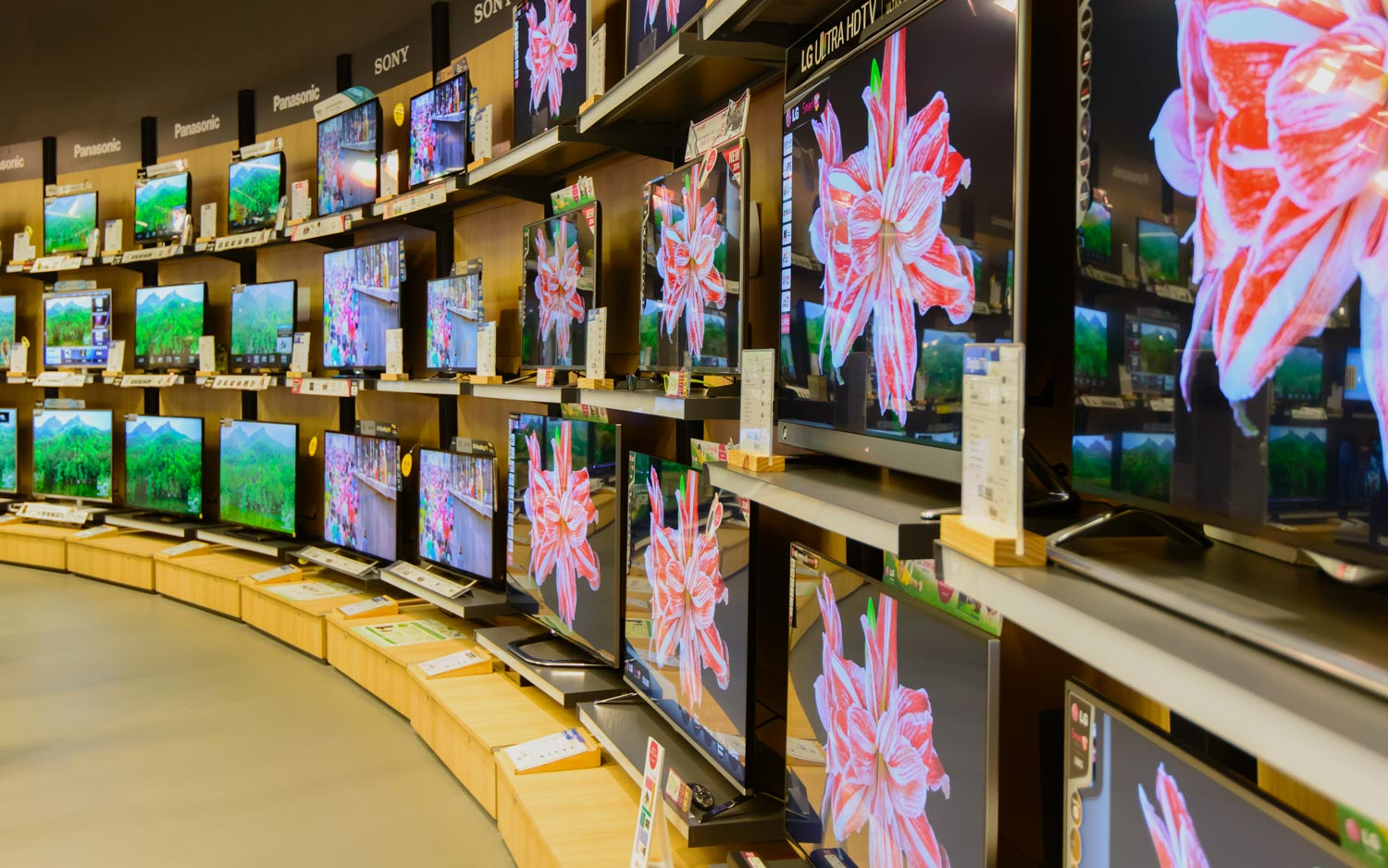New TVs and Trump's Tariffs: Time to Buy a TV Now?
New tariffs on China—with more scheduled—could cause TV prices to jump.
The race to buy ever bigger, ever cheaper big screen TVs is an annual fall-to-Super Bowl passion. Scenes of shoppers clobbering each other with giant LCD sets is a Black Friday staple.
But those scenes of shopper assault could fade this year, thanks to President Trump's trade war with China, leaving many consumers to wonder, should I buy a set right now, or wait until the tariff tussle is over?

“The trade war is having its first effects in price increases,” acknowledged Jens Heithecker, the executive director of the IFA electronics show in Berlin. IFA is the largest show of its kind attended by the public and TV makers such as Sony and LG are major exhibitors.
Tariffs that went into effect on Chinese goods at the start of September—roughly $100 billion in penalties—are expected to translate into higher prices on TVs for U.S. consumers by Black Friday, confirmed CTA, which runs the rival annual CES show in Las Vegas. According to the CTA, U.S. Tariffs on Chinese components that were enacted beginning in 2018 have already cost electronics companies $10 billion.
New tech or deals on last year's models?
The first consideration for shoppers is whether they want to get the latest technology offered in new TVs or settle for deals on older sets as last year's models get discounted to make way for the new offerings. If there aren't that many significant improvements, choosing an older model can easily save you several hundreds of dollars. However, as 4K TVs establish a foothold, the latest 8K sets are still items of aspiration, costing tens of thousands of dollars.
“There was a big step up" in picture quality of models last year said Paul Gray, director of research and analysis at IHS Markit. In an interview at IFA's Global Press Conference, Gray said manufacturers improved contrast ratios, creating sharper shadowy pictures and bringing out subtle image details.
Get instant access to breaking news, the hottest reviews, great deals and helpful tips.
MORE: Our Favorite 4K (Ultra HD) TVs Available Now
And last year's sets widely deployed new technology, even in standard HD TVs, such as full-array local dimming backlights, Gray said. That still represents a significant image improvement over sets that are 4 or 5 years old.
Are prices going down or up?
The other major criterion in making a TV buying decision is that, historically, prices drop on LCD and OLED sets later in the year, especially during the holiday buying season. This year is going to be very different.
President Donald Trump started instigating tariffs on Chinese goods and raw materials last summer. And with the latest taxes on additional goods, there's less price flexibility, especially on 4K TVs.
"There will be no grace period," said IHS Markit's Gray. "And these costs will be passed along to consumers."
Analysts agree prices for consumers will rise. The question is, by how much? Because the profit margins are so narrow and the competition among manufacturers is so tough, TV makers cannot continue to absorb the additional costs, said Gray.
The tariffs could also disproportionately hit low-end bargain sets — such as those from brands like Insignia, Hisense and TCL — where some manufacturers already make little or no money. According to research by IHS Markit, the price of a 30-inch monitor that currently costs $143 would jump $47. The price of an inexpensive, $400 50-inch 4K model would jump a whopping $100, and the price of a 55-inch set would jump $125.
Which brands will suffer?
The application of tariffs aimed at China are based on so-called rules of origin (rather than on every individual component in the display). So some brands from other countries — such as models from Korean companies like Samsung and LG, or from Japanese companies like Sharp and Sony — could escape any price increases.
Unfortunately, the rules of origin aren't always clear. High-end TVs from Samsung and LG, for example, are often assembled in Mexico, and the White House has threatened to impose new taxes on products coming from south of the border. So those TV sets could still be subject to new tariffs in the future.
MORE: Best Devices to Sling Your Phone or Tablet to a TV Screen
Sascha Lange, who oversees Sharp sales in Europe and who introduced the company's first 8K set at the IFA press conference, said that the company didn't need to worry about such issues in Europe. However, TVs with the Sharp brand in the U.S. are actually made and marketed by Chinese company Hisense. So, Sharp TV prices in America could see a price jump as well.
No warning
A year and a half ago, the impact of tariffs was unclear. Most of the early taxes were then imposed on components, and manufacturers reduced margins to maintain their prices on consumer goods, including TVs. The television business is a notoriously narrow profit margin business, as competitors race to cut prices. Facing tariffs, many companies kept TV prices flat, so consumers haven't seen the rapid price drops of years past.
"There will be no grace period," said IHS Markit's Gray. "And these costs will be passed along to consumers."
Furthermore, while there are some things TV makers could do to offset the tariffs — such as acquiring factories in other countries or shifting assembly to the U.S. — making such changes could take years. Several manufacturers at IFA said such changes were impractical given the unpredictability of future tariffs Trump might impose on other countries.
Bottom line
Trump has delayed some tariffs, such as those on smartphones, Bluetooth speakers, and fitness trackers, until December 15. That could give early Christmas shoppers a break—but it will penalize procrastinators who wait until the last-minute to purchase gifts.
Ultimately, if you're planning on buying a new TV this year, don't wait. The latest 4K Ultra HD models can deliver significant picture improvements over last year's sets—and 8K TVs with their paucity of content and stratospheric prices aren't worth the investment, yet.
John R. Quain has been reviewing and testing video and audio equipment for more than 20 years. For Tom's Guide, he has reviewed televisions, HDTV antennas, electric bikes, electric cars, as well as other outdoor equipment. He is currently a contributor to The New York Times and the CBS News television program.

